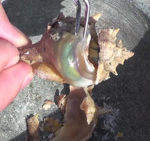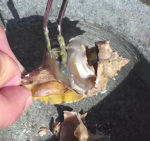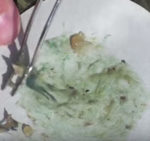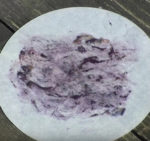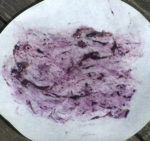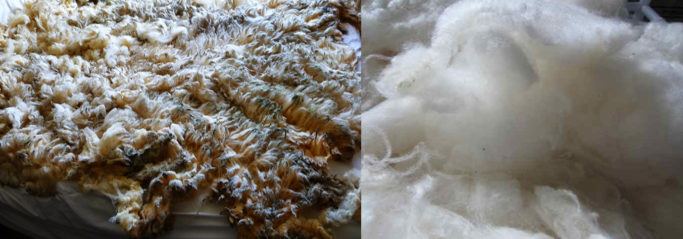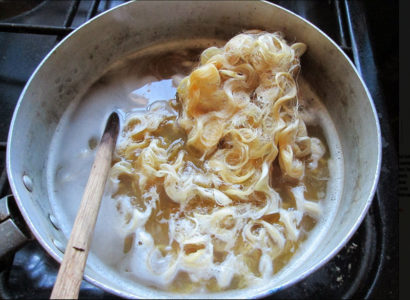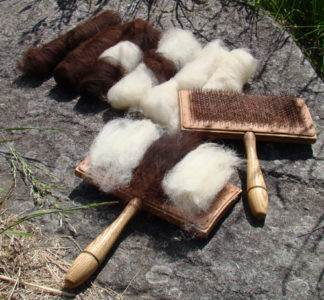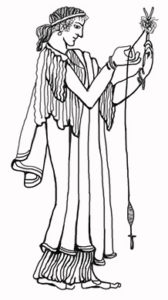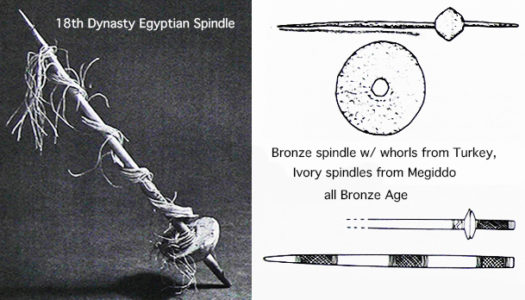
![]()
Before discussing the Murex dye, I’m delighted to announce the 3rd of the 3 reviews received for Cat Born to the Purple: another 5 stars ★★★★★ — this time from Self-Publishing Review! Go here to read the entire review.
![]()
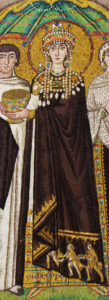
The term “royal purple” originated in the Mediterranean and Ancient Near East, particularly during the days of the Roman Empire, when the wearing of a specific color–royal purple–was a privilege restricted to the aristocracy, if not the emperor alone. Royal purple was not the color we think of today when we speak of purple. Apparently it was an almost black violet-red color, said to resemble the color of heart’s blood/clots of heart’s blood. The word “purple” in Greco-Roman times, however, was used to refer to a whole range of colors, from pale blue to red to violet to the true royal purple. Deciding which of these many colors was intended in a given passage can be difficult.
But historians agree that the priceless near-black “royal purple” dye was made only from a gland of the Murex trunculus (more recently called Hexaplex trunculus) sea snail. Depending on the strength of the dye, the time submerged, the dye process, and the type of fabric dyed, the Murex dye could also yield colors ranging from pale shades of blue, green, pink, and violet, as well as the deeper tones. Other varieties of the Murex, particularly brandaris, were also used for dyes, but were considered inferior.
At present a whole separate debate is ongoing among Jewish traditionalists about whether the blue (tekhelet) tassels required by the Torah on the corners of Jewish garments should be dyed using Murex trunculus. Recent archaeological discoveries of fabric remnants from Israel’s biblical period indicate that the original tekhelet dye was probably made from one of the Murex family, if not the trunculus, but since the source of the original tekhelet has been uncertain for so long, white has become the preferred color for these tassels. Ruscillo’s research (see below) found that immersing wool very briefly in a fresh, unheated Murex dye bath resulted in very attractive blues of varying intensity.
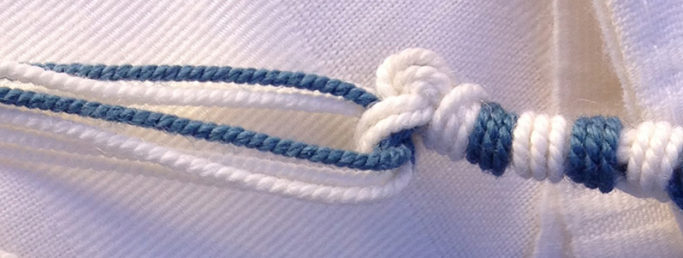
The Murex trunculus sea snail lives in the sublittoral waters of most of the Mediterranean’s coastal areas. The sublittoral zone refers to the area of relatively shallow water permanently covered by seawater that is immediately beyond the intertidal zone (the area between the high and low tidal marks, where the shore is above water at some point in the tidal cycle). The Murex must be constantly submerged to survive, but it prefers shallow water, usually no more than 20 meters deep, in sheltered coves or lagoons. Where the water is calm and protected from waves the Murex may be found at slightly greater depths. It prefers mixed sand and rocky bottoms.

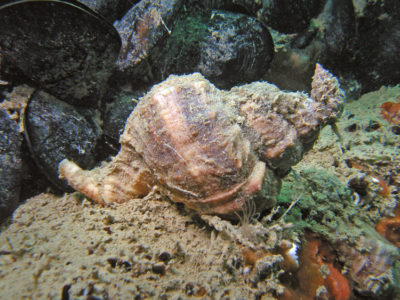 The Murex feeds in two different ways: scavenging and predation. When there isn’t enough dead material in the water, it preys on other sea snails, mussels, barnacles, hermit crabs, etc., by drilling holes and/or chipping their shells and feeding on the living flesh through the holes. Not an appealing creature, as predators go.
The Murex feeds in two different ways: scavenging and predation. When there isn’t enough dead material in the water, it preys on other sea snails, mussels, barnacles, hermit crabs, etc., by drilling holes and/or chipping their shells and feeding on the living flesh through the holes. Not an appealing creature, as predators go.

The ancients didn’t dive for the purple snails during the months between early spring and the beginning of July, because that was (and is) the Murex spawning season. Murex trunculus was harvested from the Dog Star’s first rising in the dawn sky (early July) through the winter months.
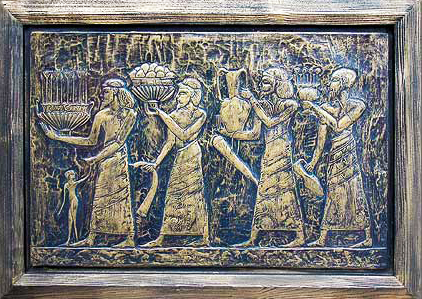
Since the only records we have describing the collecting and processing of “purples” are the writings of Roman essayists like Pliny and Vitruvius (whose reports were often more imaginative than accurate), archaeologists have had difficulty piecing together the details of the royal purple industry. Additionally, the Phoenicians–whose Murex dyes were most highly valued in early Roman times–guarded their dyeing secrets carefully. Only in the early 20th century did scientists begin to experiment with Hexaplex trunculus to try to reproduce the ancient dyeing techniques.

Deborah Ruscillo’s experiment, “Reconstructing Murex Royal Purple and Biblical Blue in the Aegean,” is by far the cleverest, and most innovative approach to this problem that I could find. By grossly simplifying her methodology, I might summarize it like this: locate an ancient Murex dyeing site where the Hexaplex trunculus is still thriving, and duplicate the processes suggested by archeological evidence and ancient texts, using tools as close to the originals as possible; where ancient wisdom fails, experiment with reasonable alternatives.
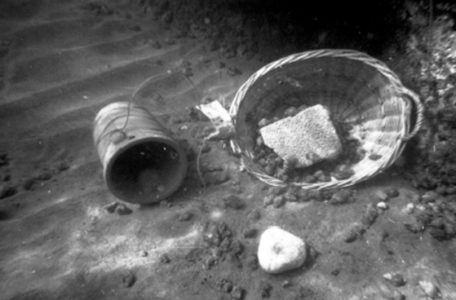
Most of Cat Born to the Purple‘s technical details of Murex dyeing came from Ruscillo’s work. For instance:
- Neither divers nor baited baskets/pots alone could have caught enough purples to supply a dyeing workshop of any size; they must have both been used together.
- Adding urine makes the color more vibrant, although the Murex dye is permanent without additives
- Boiling the dye mixture ruins the dye
- Three days is the ideal amount of time for steeping fabric in the dye
- The stench of the Murex, swarming wasps, biting flies, and hatching larvae make the dyers’ lives a misery
- Dye on hands and nails takes roughly 6 weeks to disappear
- Wool is the only fiber that absorbs the dye to create a deep, dark color
- Neither the stink nor the color is reduced by washing; perfume would have been necessary to disguise the smell, even after washing and long periods of airing.
Perhaps her most amusing and understated remark was, “Pliny never made dye himself.”
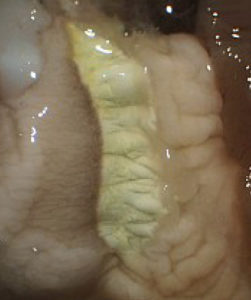
The dye comes from the hypobranchial gland of the Hexaplex trunculus, which secretes mucus for its mantle. The gland itself is pale, and must be cut out of a living snail (left), since the gland shrivels and dries shortly after death.
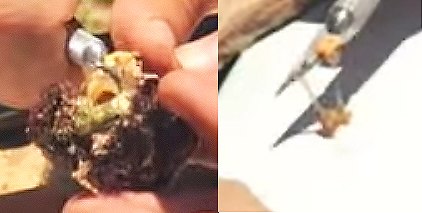
When the live gland is pierced and exposed to air, the mucus rapidly changes from clear to yellow to yellowish green, green, and violet. The photos to the right show a fresh live trunculus gland removed. The gland itself is yellowish, but the liquid is clear.
The photos below show a sequence from Pourpre filmed by pygmeejones. The timing and color may not be exact, since the snail in the sequence appears to be recently dead or the gland already ruptured in opening the shell, based on the green color of the mucus when the gland is first pierced.
Archaeologists have discovered what appear to be holding tanks for snails along the Phoenician coast, where Murex could have been kept alive in seawater until enough snails had accumulated to brew the dye. Since thousands of Murex trunculus would have been needed to dye just one cloak to the deep blackish color of the royal purple–and twice as many if Murex brandaris snails were used–there would have been a definite need for such tanks.
Like most Mediterranean cultures, Phoenicians trafficked in slaves, and may have made a habit of kidnapping unwary women and children in their ports of call. The citizens of Sepphoris rounded up by the Romans after the brief rebellion following Herod the Great’s death were sold to Phoenician slavers in Acco. No doubt because of the extreme unpleasantness of the tasks involved, slaves provided most of the labor in the Phoenician Murex dye industry.
The stench of the opened snails permeated the area of the dye workshops and beyond. Contemporary accounts described Tyre and Sidon as attractive cities, but stinking of the Murex dye. In almost every case where archaeologists have found the huge piles of broken Murex shells that identify a likely dye site, the piles have been well outside the cities.
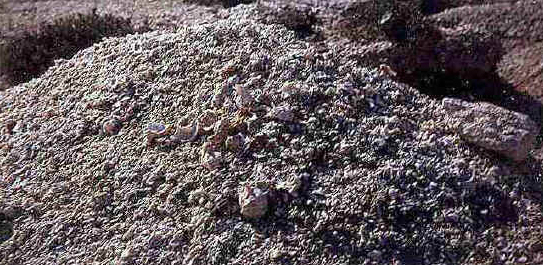
Finally, Ruscillo asks one question that I never saw raised anywhere else: was ancient fleece stained with Murex dye before before it was woven (dyed in the wool), or was the whole cloth dyed after the fabric was completed? Her experiment showed that dying the unwoven fleece left a powdery residue of purple dye in the wool that filtered out and left stains on workers and work areas. The residue made an extra post-dye washing essential before the wool could be spun and woven, which would have required extra time and labor. Dyeing already woven fabric left no such residue, and also eliminated the problem of different dye lots of thread creating an unevenly-colored weaving.
For more details, imaginative and historical, read Cat Born to the Purple!
.

